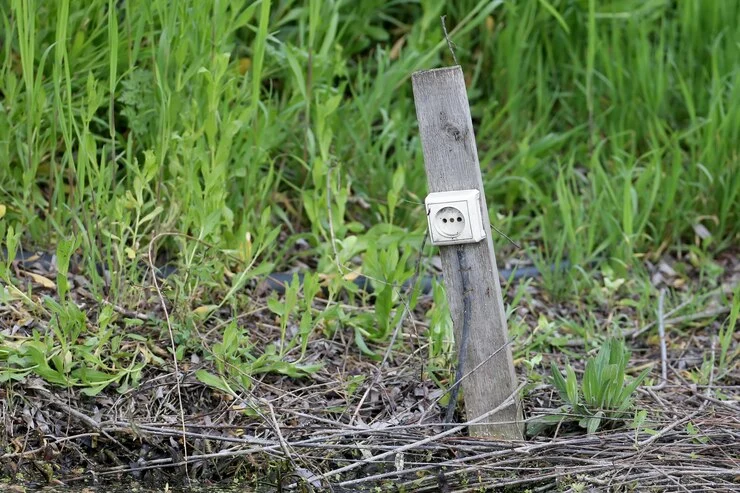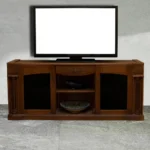When it comes to outdoor equipment, gardening, or construction, knowing your tools is important. People often ask: ‘Is a ground socket the same as a stake? This confusion comes from two tools that look similar but have different purposes. Here, we’ll explain what ground sockets and stakes are, how they differ, and when to use each one. This will help you choose the right tool for your needs.
What Is a Ground Socket?
A ground socket is a fitting used to anchor posts, poles, or similar structures in the ground. It is usually made of metal, steel, or plastic. Ground sockets are often used for fences, flags, or temporary structures like tents. They are installed first, providing a stable base for inserting and removing posts without digging holes or permanently anchoring them.
Key Features of Ground Sockets:
- Made of metal or steel for durability.
- Used to hold posts or poles in place securely.
- Allows easy removal and replacement of posts.
- Commonly used for temporary or semi-permanent structures.
What Is a Stake?
A stake, on the other hand, is a pointed object typically made from wood, metal, or plastic, which is driven into the ground to hold something in place. Stakes are often used in gardening, marking boundaries, or securing items like tents and tarps. Unlike ground sockets, stakes don’t have a receptacle for a pole to fit into. Instead, they directly pierce the ground and provide stability by holding down or securing items.
Key Features of Stakes:
- Pointed ends to pierce the ground.
- Primarily used for securing items directly to the ground.
- Commonly made of wood, metal, or plastic.
- Can be used in gardening, outdoor tents, or marking boundaries.
So, Is a Ground Socket a Stake?
No, a ground socket is not a stake, although they share some similarities. Both are used to secure objects to the ground, but the primary difference lies in their design and function:
- Ground Socket: A hollow tube that holds a post or pole.
- Stake: A pointed object driven directly into the ground to secure an item.
Ground sockets are more designed for situations where you need to frequently remove or replace the posts they hold, while stakes are meant to remain in place and serve a more temporary or permanent anchoring role.
How Do Ground Sockets Work?
Ground sockets are primarily used in situations where you need to insert and remove a post or pole without permanent installation. The ground socket is typically driven into the ground until it’s stable, and a post is then inserted into the socket. Some models feature locking mechanisms to ensure the post stays firmly in place. This system is ideal for applications such as temporary fencing, flagpoles, or tents.
Common Uses for Ground Sockets:
- Temporary fence posts: Easy setup and removal.
- Flagpoles: For residential or commercial use.
- Tents or marquees: Used for securing tent poles in outdoor events.
- Bollards or light poles: For placing and replacing without digging.
How Do Stakes Work?
Stakes are often hammered directly into the ground and are more permanent than ground sockets. They are used in situations where the item needs to stay in place for an extended period but doesn’t require removal. For example, garden stakes are used to secure plants or structures like tarps. Tent stakes are hammered into the ground to hold a camping tent down during windy conditions. Stakes can also be used for marking boundaries on construction sites or for securing ropes and lines in various outdoor activities.
Common Uses for Stakes:
- Tent stakes: Used for securing tents during camping trips.
- Garden stakes: To help plants grow straight.
- Boundary marking: Used in surveying or construction.
- Securing tarps: To prevent the tarp from blowing away in the wind.

Benefits of Using Ground Sockets
Ground sockets offer several advantages over traditional stakes, especially when it comes to convenience and long-term use. Here are some key benefits:
- Easier to Remove and Replace Posts: Ground sockets allow you to easily remove posts for repairs or replacements without disrupting the ground.
- Permanent Stability: When correctly installed, ground sockets provide a more stable, long-lasting anchor than stakes.
- Versatility: They can be used in various applications, from flagpoles to temporary fencing.
- Minimal Ground Disruption: Unlike digging holes for fence posts, a ground socket causes minimal disruption to the soil, making it easier to adjust or relocate posts as needed.
Benefits of Using Stakes
While ground sockets offer flexibility, stakes also have their advantages:
- Cost-Effective: Stakes are generally cheaper than ground sockets, making them ideal for short-term or budget-friendly solutions.
- Simplicity: Stakes are easy to use and don’t require any installation process beyond hammering them into the ground.
- Lightweight: Stakes are often lighter than ground sockets, making them easier to transport and store.
- Perfect for Temporary Applications: If you need something to hold in place temporarily (like a camping tent), stakes are a great solution.
Choosing Between a Ground Socket and a Stake
When deciding whether a ground socket or a stake is best for your needs, consider the following factors:
Duration of Use
- If you need something that can be easily removed or replaced, a ground socket is your best option.
- If you need a more permanent solution, or if the object doesn’t need frequent removal, stakes are a good choice.
Ease of Use
- Stakes are easier to install since they don’t require any extra tools or components.
- Ground sockets may require a bit more effort during installation, but they provide better long-term performance.
Stability
- For more stability, especially for larger posts or flagpoles, ground sockets provide better support.
- Stakes are more suited for lighter, temporary applications.
Budget
- Stakes are often the more budget-friendly option.
- Ground sockets, while generally more expensive, offer greater durability and versatility.
Installation Tips for Ground Sockets
If you decide to use a ground socket for your project, here are some installation tips to ensure proper use:
- Choose the Right Size: Make sure the ground socket is the correct size for the post or pole you plan to use.
- Use a Hammer or Mallet: Install the socket into the ground using a rubber mallet or hammer to avoid damage.
- Ensure Stability: After installing the socket, make sure it is level and secure to prevent wobbling of the post.
- Locking Mechanisms: If your ground socket has a locking mechanism, make sure it is properly engaged to keep the post in place.
Conclusion
To sum up, a ground socket is not the same as a stake, but both are useful for securing things to the ground. Ground sockets are great for situations where you need to put up posts that can be taken out or replaced easily. On the other hand, stakes work best when you need something temporary or want a quick, easy setup. Knowing the differences between the two will help you pick the right one for your project. Whether you’re putting up a fence, setting up a tent, or installing a flagpole, choosing the right tool will make sure everything stays secure and stable.









